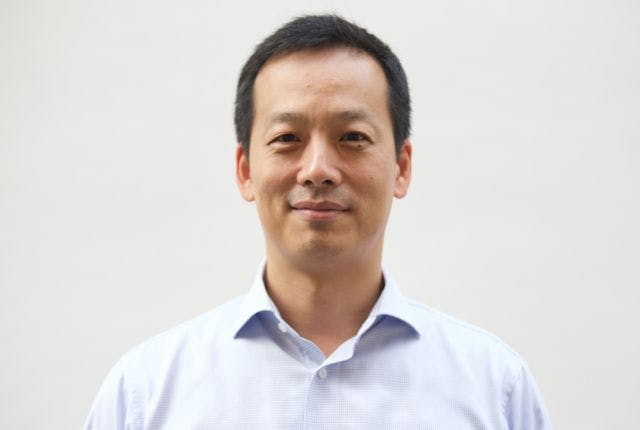As climate change and sustainability move up the investor agenda, money is flooding into environmental, social and governance (ESG) funds. About US$2.7 trillion of assets are now managed in more than 2,900 ESG funds, according to global investment research firm Morningstar. There were about US$14.5 billion inflows into the sector in the last quarter of last year.
As investments boom, so do ESG advisories. Rating consultancies have popped up to assist investors using a diversity of approaches and methods. The standardisation of ESG scoring is still missing, leading to “aggregate confusion”, according to academics at MIT Sloan School of Management in a recent report.
“First, it makes it difficult to evaluate the ESG performance of companies, funds and portfolios, which is the primary purpose of ESG ratings,” said Florian Berg, Julian Kölbel and Roberto Rigobon, authors of the report.
Due diligence, hours of calls with fund managers, and qualitative and quantitative screening is what it takes to produce high-quality ESG investments, according to Samuel Rhee, chairman and chief investment officer at Endowus, a digital wealth advisor.
Greenwashing is an issue. Regulators in the US and Europe are pushing for better transparency around how ESG funds make up portfolios. “The biggest red flags and the easiest greenwashing to spot is those who just add sustainable or ESG into their fund name,” said Rhee. “We need to create a much more robust portfolio.”
But sustainable investing is still a “niche product” in Asia, according to Rhee. “People are exploring it, but we haven’t seen the mass adoption of ESG or sustainable types of investing,” Rhee said, adding that he is confident the situation is changing. “We can do good and do well,” he said.
Are investors in Asia convinced by ESG? How are you persuading the more conservative investors to hedge their bets on ESG investment funds?
There are two ways to look at it. One is from the investor’s perspective as a professional — like an institutional investor or a fund manager trying to invest in Asia. And then there is the other aspect where you approach it from a consumer’s viewpoint — as a retail investor looking for ESG investments, and you ask: what is available?

Samuel Rhee, chairman and chief investment officer, Endowus. Image: Endowus.
On the supply side, Asian fund managers do not have a very robust framework, a proper taxonomy or investment philosophy processes. There has been a bit of a faddish response. People are renaming existing funds into sustainable funds, introducing some simple negative screening or using MSCI sustainable indices — very basic stuff, which really does not help the cause of ESG and sustainable investing. I think from that perspective, on the supply side, Asian fund managers and Asian investors are far behind their peers in Europe and elsewhere.
There needs to be a specialisation. And that has not happened here yet as we are about five years into this. Whereas the European fund management companies have been doing this for a long time and have specialised in ESG investing, fine-tuned processes, introduced investment analytics and other new tools, so they are much more innovative and mature.
For retail investors, Asians are a bit more prone to trading and they have just been bitten by the passive investing bug. And for something like ESG to take off, this demand needs to see a certain maturity. People are exploring ESG investing, but we really have not seen mass adoption of ESG or sustainable types of investing. It is largely led by institutional investors like sovereign wealth funds such as Temasek and GIC but it has not filtered down to the retail investor level yet. But we are making progress.
Before we launched the ESG, sustainable portfolios, we did a broad survey last year, of our client base and beyond that. More than 90 per cent of respondents said that they are interested in the concept of ESG investing, but less than 20 per cent said they have any kind of ESG exposure. And when they describe ESG exposure, it includes things like owning a Tesla [electric vehicle], which is a very integral way of investing in the sustainable energy sector. It is still very nascent. They do not feel that they have enough knowledge about ESG investing, with more than half — 60 per cent — saying that they do not know enough.
How do you communicate to consumers about ESG investing?
We launched what we felt was a very high quality, sustainable, institutional-like ESG solution for retail investors. And we were the first ones to do so in the industry. Institutional products like Mirova, for example, which are now being sold at private banks, are not readily available to retail investors. By introducing the PIMCO green bond fund, we provide institutional share classes — four different funds — that did not exist in Singapore before. Two of them, I believe, are still exclusive to Endowus. We had to do that because there were not many options available in Singapore, and there were not many good options too, according to our survey findings.
Education also becomes very important as the level of understanding of sustainable investment among retail investors is very low. What does sustainable investing mean? For a long time, ESG investing was associated with lower returns. People need to get over that mental hurdle, especially when these funds massively outperformed other funds during Covid-19, people need to understand that they can generate great returns. The industry has evolved, becoming a little more sophisticated, more active and therefore it is able to generate better returns.
We know that millennials and Gen Z are likely to be more engaged in sustainability issues. How much of investment in ESG is a young man’s game?
It is true to a degree. I am not a big fan of generalising but it is almost shocking that there is a generational gap when it comes to ESG investing. Our survey, however, shows a nuanced picture, and it says that yes, millennials are the most positive about ESG investing, but so are the older generation — more so than the Gen Z. It is not just about age.
For us, we are preparing for the future of wealth management. We are trying to be a leader in a fee-only business, which means that we aligned to the best interests of the client. We are about restoring fiduciary duty in the wealth management industry, because it is broken, and there is a lot of misalignment and mis-selling going on. Recently, we announced the return of more than S$2 million (about US$1.47 million) in cash back in trailer fees to our clients.
We have a globally diversified low cost portfolio that is suitable for retail investors, but at institutional grade and at institutional quality. We have positioned for that generational shift but it is tough convincing them that this is important and that we need to put our money where our mouth is.
How do you avoid funnelling funds into a narrow set of industries that appear to score well on ESG scorecards but on closer inspection, do not have the same impact as other funds potentially?
We are not just a robo-solution, and we do not just offer a single product. What we have is almost like a digital private bank. There is a 10-person team working hard in the Endowus office to do the due diligence, fund screening, optimisation, portfolio design and to adjust the risk-adjusted returns, to ensure that we build something that is high quality. This is being done for the ESG portfolio as well.
We know that there is a plethora of funds out there in the equity space and it is increasing. Last year, we conducted a screening and there were 70 ESG funds. A few months later, there were 110. What we do is we screen all of the funds available out there globally, even those that are not available here in Singapore, analyse these funds and choose the best ones.
We believe in diversification. We also believe that you should be globally diversified and sectorally diversified to minimise risk, especially in volatile markets. And so we build up a series of multi manager fund lists and then geographically optimise it. Then we really do due diligence where the manager quantitatively and qualitatively assess the funds and come up with a robust framework.
The screening of ESG products and funds have come under a lot of scrutiny. There is a lot of concern that fund managers are overstating the green credentials and impact of such funds. What are the safeguards you put in place to prevent greenwashing? What are the red flags that you look for?
Greenwashing exists at every level — both at the company and fund level — it happens everywhere. The extent of greenwashing, however depends on the asset class. In the fixed income space, the definition is a bit more black and white. The taxonomy is also more advanced, or it is improving, so that is easier to monitor.
In the equities space, there is a lot more greenwashing. I feel that ESG and sustainable investing in the equity space has to be an active selection process. When we look at the funds and the fund managers, the biggest red flags and the easiest greenwashing to spot are those that just add sustainable or ESG into their fund names, even as nothing has really changed. They tout ESG goals, but only have a very basic screening process.
For us, we wanted to create a more robust portfolio. We would talk to each individual fund manager. The track record of the fund is also important to us.
Do you think the regulation around ESG funds and sustainability-linked bonds are heading in the right direction?
Regulations can help with disclosure. The requirement for listed companies to provide proper disclosure and to ensure transparency of data is where regulators can put in place the first line of defense. It is critical and there has been some progress on that front.
When it comes to marketing, there is, however a lot of false advertising. People tout products that should not be sold as sustainable, and it is misleading for retail investors and leads to poor outcomes. It destroys the credibility of the entire sector. There is a malaise in the financial sector, and a big challenge that the Monetary Authority of Singapore (MAS) has to deal with.
On the most important aspect of ESG investing, that is the actual act of making the investment — picking out the good apples, separating the wheat from the chaff — we, as advisors, are trying to do our due diligence, to enhance investment methodologies and improve the process for better outcomes. The role of the advisor is critical, but heavily understated, and it is especially so in Asia. I think this mentality has to change. We need to appreciate that advice can help an individual’s investment and wealth building journey, and also that advisors have a huge fiduciary duty to guide investors in the right way.
The interview has been edited for clarity and brevity.


















